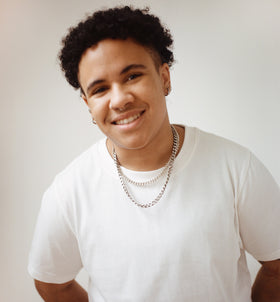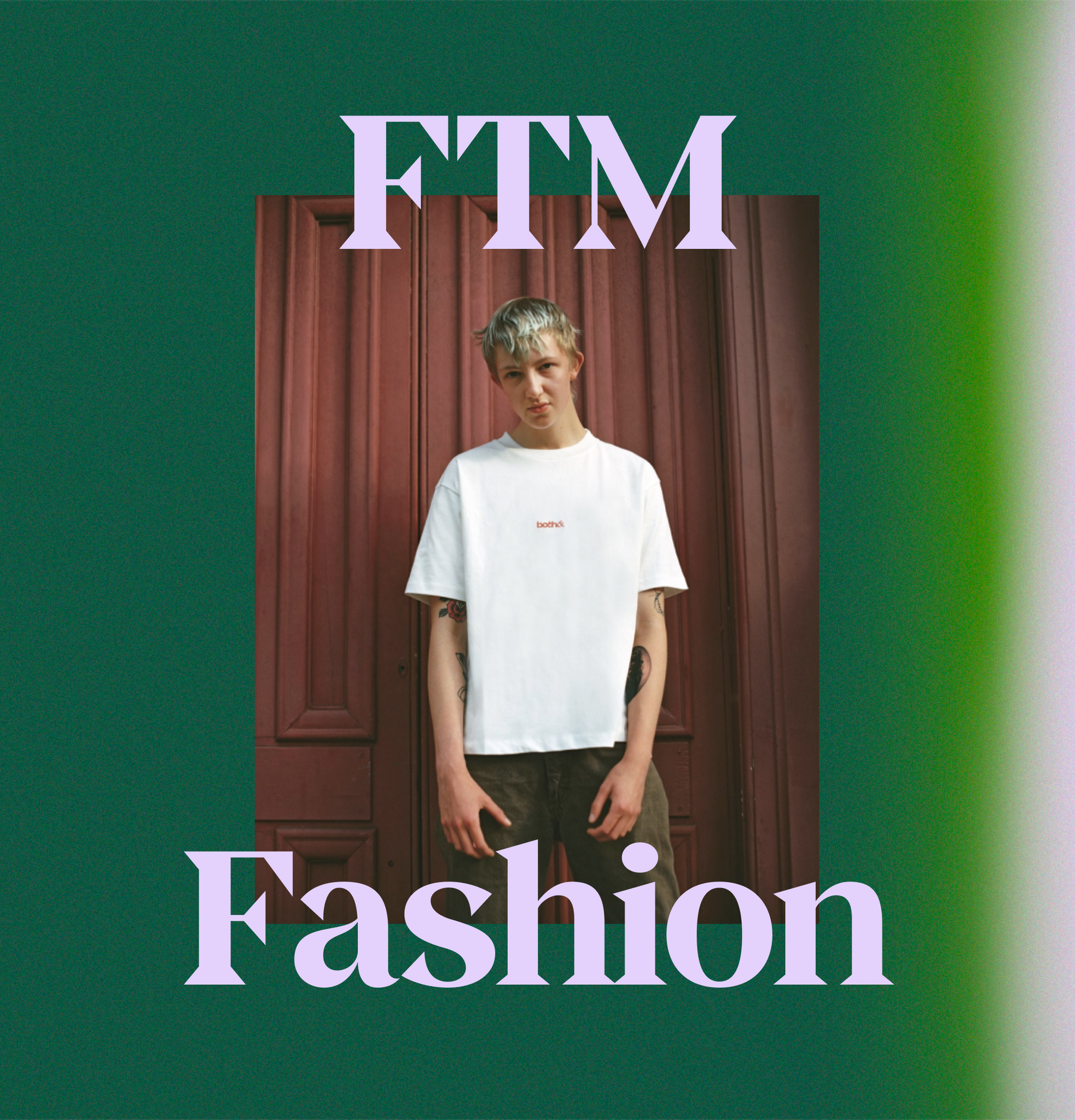
Oct 8, 2023
FTM and AFAB Fashion For You–Find Your Perfect Fit
Finnegan Shepard Founder of Both&
If you are AFAB and masc presenting, you’re in luck. It’s never been easier to access clothing that is tailored to your body shape and to the way you want clothing to fit. Only ten years ago, nonbinary, transmasc, and gender queer people had essentially no options, and the anxiety, shame, and sadness associated with that experience (seeing a male best friend wear a white tee that fits him perfectly, only to try it on and have it cling to the chest and hips and be oversized in the shoulders and arms, swimming in a men’s suit at a wedding, hating pool parties–there are an infinite number of these stories) is still something most of us gender queer folk can relate to.
As an amusing, on the nose Tweet once said, “I love my trans partner so much, but their fit is trash.” This Tweet is funny because we all know exactly what it’s talking about. The pants that are too long and have to be cuffed six times. The dress shirt that needs to be tucked in but then emphasizes hips in an uncomfortable way. The avoidance of swimming at all costs because what the heck are you supposed to wear as an FTM or AFAB, masc presenting person?
The reason these problems abound is that historically, all clothing has been made using cisgender fit and sizing systems. What does that mean? It means that the powers that be have collected data on what an ‘average’ cisgender body is (length of torso relative to hip width, chest width, and shoulder width’, etc.) and based the pattern of clothing on those averages. This means that in the past, people who identify as FTM or masc presenting AFAB were stuck choosing between women’s clothing, where the sizing is more likely to fit, and men’s clothing, which has the desired silhouette but which won’t fit AFAB bodies well.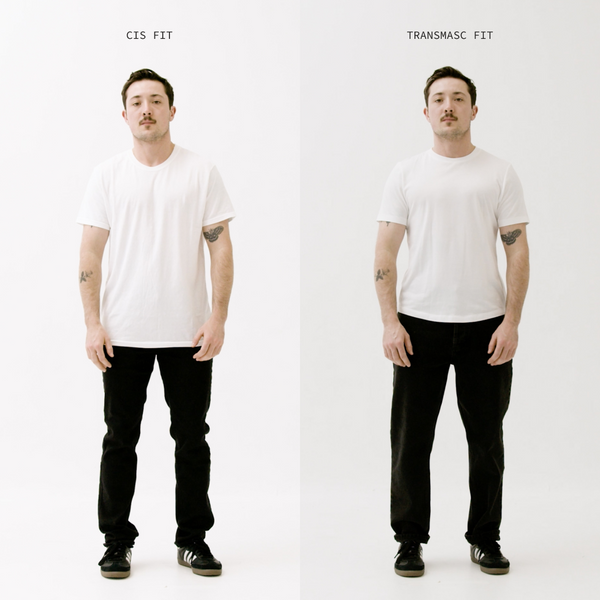
Here’s the good news.
- There are now companies that have done the research required to build new fit and sizing systems specifically for FTM or AFAB, masc presenting people.
- We are going to walk you through a step by step guide of exactly how this works, and what you need to know to effectively navigate this new fashion landscape.
- When you finish this article, you will know everything you need to know to be able to find your perfect fit!
AFAB 101: A Brief History of the Fashion Landscape for FTM and AFAB, Masc Presenting Folks
If you go way back (back before the 20th century), fashion looked a whole lot different. Not only were gender expressions and norms very different, but because there was no mass manufacturing of clothing, everything was bespoke. Because it was bespoke, the question of fit and it’s relationship to gender was a mute point. Basically, everyone just had clothing that was tailored to their bodies. In the 20th century, this all changed. Specifically WWI ushered in a new opportunity to utilize the technological progress of the industrial revolution and make standardized uniforms for soldiers. To mass manufacture clothing, they needed to have an ‘average’ body to base their measurements off of, and then grade up and down a sizing system.
Enter: cisgender fit and sizing systems.
While this movement made creating clothing a lot simpler, cheaper, and faster, it was also incredibly exclusionary. After all, the whole basis of the system is to decide who fits into ‘average’ body proportions and who doesn’t. Is it any surprise that nonbinary, trans, and gender queer people were not accounted for in this system?
Fast forward a hundred years, and some AFAB, masc presenting folks were sick and tired of a system that didn’t work for them. They began to wonder why ‘men’s’ shirts always had to be made according to the stereotypical 6’2” medium size build. Why not make men’s shirts that would work on different heights and body types.
Two of these early companies are TomboyX and Kirrin Finch. TomboyX was founded in 2013 in Seattle Washington, by two lesbian-identified partners who were sick and tired of never being able to find underwear that fit them and that they felt comfortable in. Relatable, right? Whether you are packing and need to sew a little pouch on the inside of boxers or whether you are just looking for a nice brief that doesn’t pinch your hips or chafe your thighs, many of us can relate to the underwear struggle.
Soon after, Kirrin Finch was founded. Kirrin Finch was addressing a different, but adjacent market gap, specifically menswear style suits, for AFAB people. They went for a more luxury feel, using high quality fabrics and selling at a higher price point.
Both of these brands have done amazing things to serve particular needs in the FTM and AFAB communities. However, no brand can serve all the needs, and by 2020, it was becoming apparent that more options were needed for this community to help achieve perfect fit and gender joy. The great news is that brands have been founded to serve just this purpose, so that you can have the support and the access to gender affirming products that you deserve!
Decoding Perfect Fit: A Guide to Finding Your Ideal Wardrobe
If you are FTM or AFAB and masc presenting, you (most likely) face these challenges:
- Hips (tops). Shirts from the men’s section that fit you in terms of length are too narrow, and bunch at the hips. Here’s a picture to show what we mean:
They also often suffer from a few other issues (shoulders too wide, sleeves too long/baggy, and fabric too thin and clingy).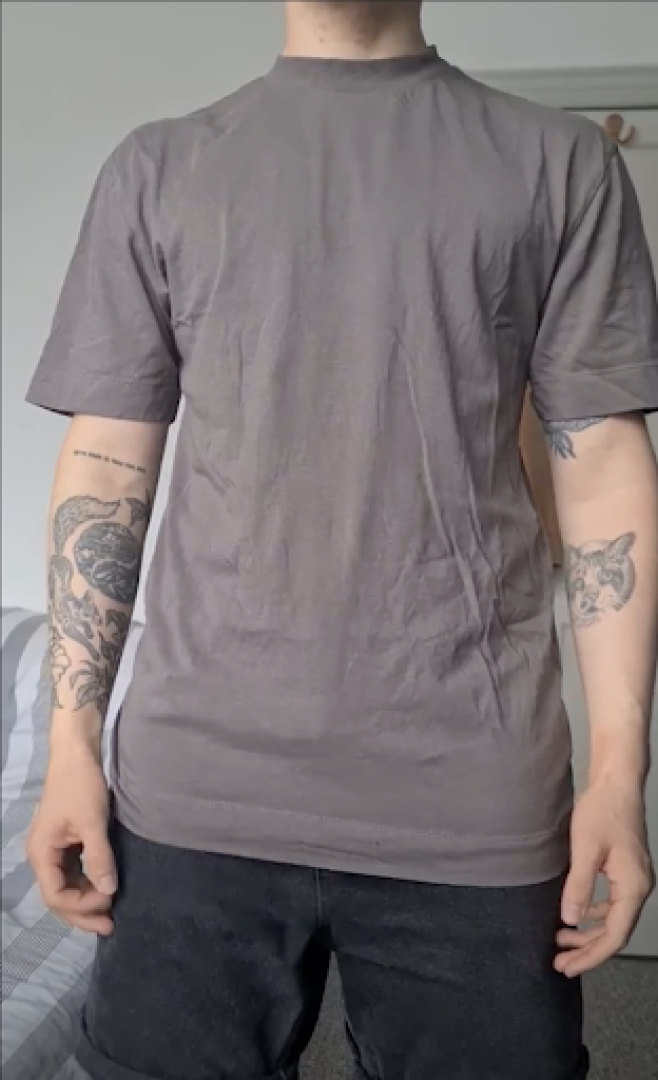
- Hips (bottoms). AFAB people have a wider bone structure at the hips than cisgender men, and on average, have shorter length of legs. This means that when we buy pants from the men’s section, we often need to get pants that are far too long and baggy, just to be able to get a size that will fit over or on our hips. Alternatively, if you get pants that are roughly the right length and width, they don’t fit your hips/you can’t button them closed:

- Emphasis and de-emphasis. Most transmasc, FTM, AFAB masc presenting people want to show off muscle in shoulders and arms, and minimize curves at the chest or waist. To do this, you have to change the proportions of a garment to have a narrower shoulder width, a tighter sleeve, the exact right width in the body, and a scoop of slit back hem so that the shirt doesn’t catch at the hips. The result, when done right, is like this shirt by Both&:
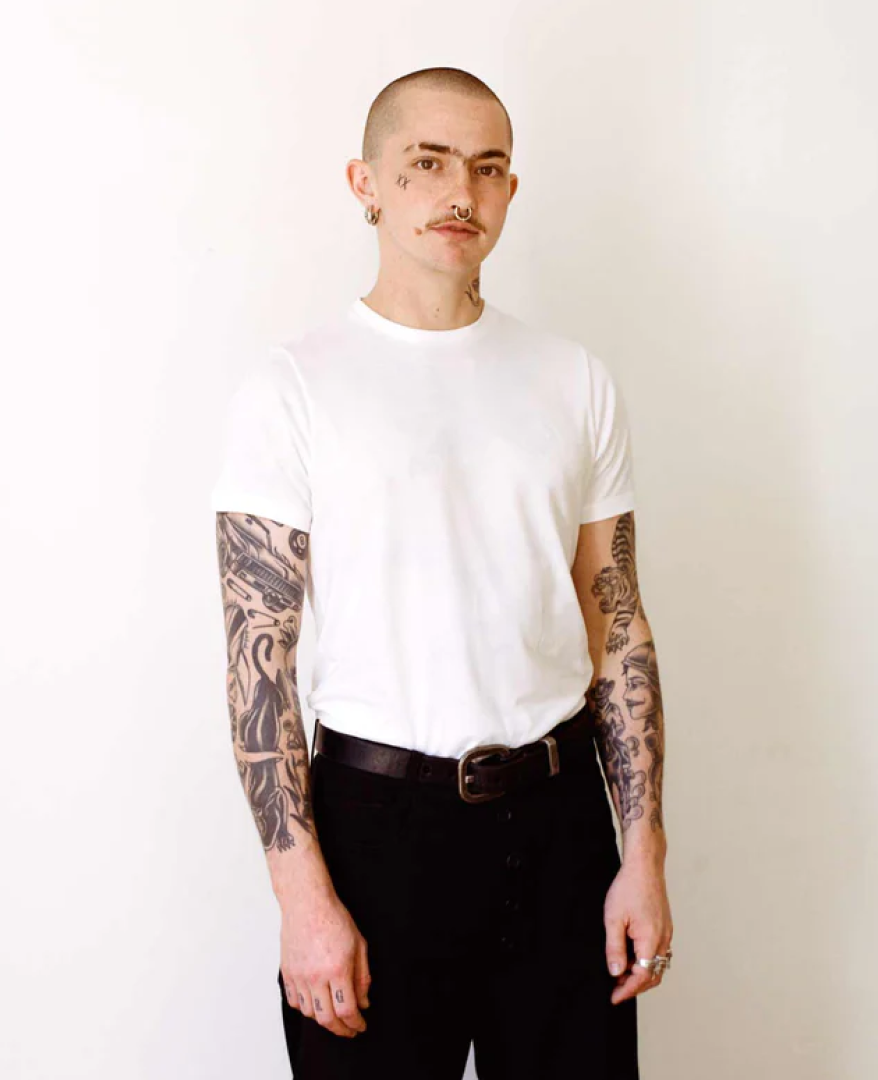
Here are our top tips to help you figure out your sizing and the kind of fit you want:
- Choose fit and sizing based around the area of your body that causes the most dysphoria. If you find a garment that is the right measurement in the shoulders and length but is a skin tight fit around the hips, that will most likely be a really uncomfortable size for you. Better to go a size up, or to find a different brand or fit that would have that discrepancy between the sizes you need at different parts of your body.
- Go for thicker fabrics. One of the hardest things about cis male clothing is that the shirts especially tend to be very sheer, which makes them clean. If you have curves you are trying to minimize, this will be a challenge. Thicker cottons will hold more structure and create more of a square shape.
- As Amiram Assouline, an accomplished designer with decades of experience in the fashion world says, finding perfect fit for FTM and AFAB people is about “creating squares where there would otherwise be curves.”
Shop FTM and AFAB Looks
Below, we have curated three top styles, as chosen by the FTM and AFAB, masc presenting community. Each style is unique, but all of them are made with the specific proportions and design details that are most beneficial to the community in mind.
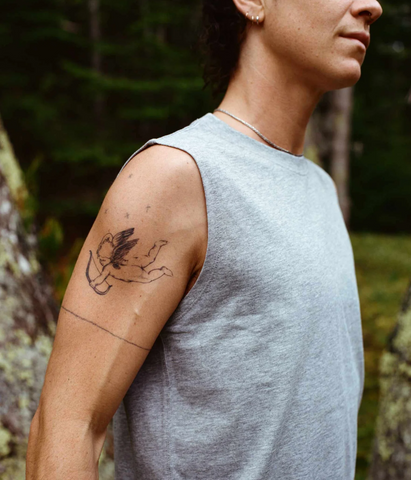
What makes the Romeo special? This tank is made specifically to be a great fit option for folks who are binding but still want to enjoy the summertime. The key innovations to the garment are:
- A narrower arm hole and tighter crew collar to cover the binder.
- A medium weight fabric that is heavy enough to hold structure and not cling, but lightweight enough to be enjoyable to wear on hot summer days.
- A shorter torso, with plenty of room at the hips, for the ideal AFAB fit.

The Marlo is a cult classic for FTM folks who want a masculine pant that isn’t too long and that fits right in the hips. A number of design details have been used to create this ideal pant:
- Removable inserts on the inside of the pants that create a straight fall from high hip to low hip, thereby making the curviest part of the body square.
- Adjusted proportions for wider waistband options (up to 42”) while maintaining a 28” inseam (which works for people between 5’0” to 5’9”).
- 98% cotton, 2% elastane high quality fabric that allows for a slight stretch, maintaining maximum comfort and confidence all day long.

The Finnegan was the first tee that Both& apparel launched with. The shirt is made for both folks who are binding and folks who are post top surgery. It’s key design elements are:
The Wrap Up
Whether you are just starting to explore your gender or are deep into transition, finding clothing is a key part of the process in helping you feel empowered, confident, and comfortable day to day. In this article, we discussed a brief history of the fashion landscape for AFAB and FTM folks, the areas that were previously unaddressed, and how brands lke Both& Apparel have been founded to create the data-backed systems required to deliver perfect fit to this community.
If you would like to do further reading, we recommend you explore how folks mix feminine and masculine elements in style here and read about FTM pants here.



